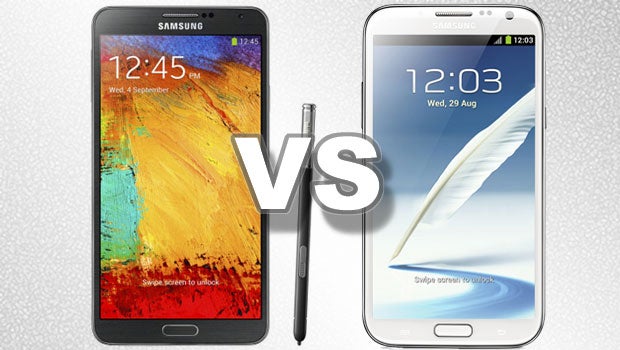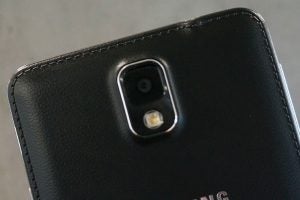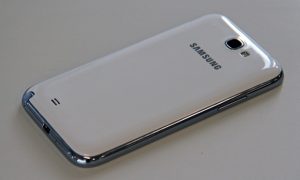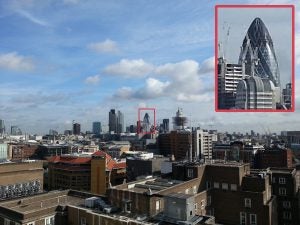Samsung Galaxy Note 3 vs Note 2

Galaxy Note 3 vs Galaxy Note 2
The Note line-up is Samsung’s prestige series of stylus phones. They use Android like the majority of smartphones, but incorporate a digitiser stylus to let you draw and handwrite more naturally than other phones.
But how does this year’s Galaxy Note 3 compare to last year’s Note 2? Is it worth upgrading, or is the Note 2 good enough? We’ve compared their specs to see if it’s worth upgrading.
SEE ALSO: Best Android phones round-up
Galaxy Note 3 vs Galaxy Note 2 – Design
Note 3 – Plastic rear, leather effect finish, 8.3mm thick, 168g
Note 2 – Plastic rear, glossy finish, 9.4mm thick, 183g
Although the Note 3 has a larger screen than last year’s Note 2, this year’s model is actually narrower and less heavy. It’s 168g and 8.3mm thick – down from 183g and 9.4mm in the Note 2.
Side-by-side you’ll notice the difference in weight, but we think both phones are impressively thin and light given how big and feature-packed they are.
One of the best design tweaks is the S Pen cubby hole that sits on the bottom edge of both the Note 3 and Note 2. It makes the S Pen less easy to lose (without it, the S Pen would be a write-off for many.)
 Samsung has changed its design style a little with the Galaxy Note 3, though. Rather than glossy plastic – used in the vast majority of Galaxy-series phone – it has a leather-effect rear, complete with fake stitching.
Samsung has changed its design style a little with the Galaxy Note 3, though. Rather than glossy plastic – used in the vast majority of Galaxy-series phone – it has a leather-effect rear, complete with fake stitching.
It gives the Note 3 a grippier finish, which is a good thing, but build quality hasn’t really changed much. It’s still a thin, flimsy removable battery cover.
So, the Note 3 is a minor upgrade design-wise, but there’s nothing wrong with that. Crucially, while the Note 3 and Note 2 are big, they’re nowhere near as large as super-phones such as the Sony Xperia Ultra 6.3.
Galaxy Note 3 vs Galaxy Note 2 – Screen
Note 3 – 1080p Super AMOLED 5.7-inch, 386ppi
Note 2 – 1,280 x 720 pixel Super AMOLED 5.5-inch, 267ppi
Each successive Note phone sees Samsung add 0.2 inches to screen size – it’s becoming a tradition. The Note 3 has a 5.7-inch screen, where the Note 2 has a 5.5-inch screen.
It’s not just size that has improved, though. The Note 3 also has a much higher-resolution display. It has a 1080p screen, where the Note 2 has a 1,280 x 720 pixel panel. That’s a whole lot more pixels – two million versus fewer than one million, or 386ppi against 267ppi.
The difference in sharpness isn’t quite as great as you might think, though. It’s all down to the sub-pixel arrays their screens use. We’re going to have to get a teeny bit technical here, so bear with us.
The Note 2 has an RGB display, meaning each pixel is made up of red, green and blue sub-pixels. The Note 3 has a PenTile-arrangement display, where sub-pixel clusters are made up of two green, one blue and one red sub-pixel – giving two sub-pixels per pixel.
This results in worse sharpness relative to the pixel density. You have to get right up close to the screen to notice it, though, and the Note 3 is still superior to the Note 2 in this respect.
Both the Note 3 and Note 2 offer excellent contrast, vibrant colours – and the ability to tone down those colours if you prefer a more natural look than the larger-than-life style of OLED screens.
Once again, the Note 3 is appreciably better, but it’s a slightly less marked improvement than the figures alone might suggest.
SEE ALSO: Galaxy S4 vs Note 3
Galaxy Note 3 vs Galaxy Note 2 – S Pen
Note 3 – single-button, push-in tip, Wacom digitiser
Note 2 – single-button, push-in tip, Wacom digitiser
Samsung has made some significant software improvements in the way the Note 3’s S Pen stylus works software-wise, but the hardware is very similar.
The Note 2 and Note 3 use a light plastic pen with a single button, used to operate various features in these phones. Both also use a Wacom-made digitiser layer – you can’t ask for much better than Wacom as it makes the most popular professional graphics tablets.

The Note 2 has a slightly different style to the new model
However, when you’re limited to Android apps, what matters is the number of programs you can get that support pressure sensitivity. There’s a bunch nowadays – more than when the Note 2 first came out.
Top picks include Autodesk’s Sketchbook Pro (pre-installed on a Note 3), Markers, Papyrus and Plouik. Sketchbook Pro is our favourite of the bunch, but Markers is free to download if you don’t want to spend any cash.
In these terms, there’s little to separate the Note 3 from the Note 2. However, there are some ‘native’ software extras in the newer phone.
The most important of the lot is Air Command. This is a circular menu that pops-up when you press the S Pen button while hovering over the screen.
These Note 3 features aren’t yet available for the Note 2 – and we’re not sure yet whether Samsung will spend the time (and money, more importantly) producing the update.
Galaxy Note 3 vs Galaxy Note 2 – Software
Note 3 – Android 4.3 with TouchWiz
Note 2 – Android 4.1 with TouchWiz
Like every Samsung-branded Android phone, the Note 3 and Note 2 both use TouchWiz, the company’s long-standing custom interface. It’s a colourful and jolly-looking interface, happy to look cheerful rather than particularly stylish.
TouchWiz is also jam-packed with extra features. As you’d expect of a phone a year newer, the Note 3 has even more than the Note 2 – and the Note 2 had enough to start with.
New-for-2013 extras include air gestures and the IR transmitter. This lets you use the Galaxy Note 3 as a universal TV remote controller.
This is a pretty neat extra if you think you’ll use it, but we don’t think there are many truly exciting core software features added to the Note 3 bar Air Command. Optical character recognition works very well in both phones, which is the main thing.
However, as it runs Android 4.1, the Note 2 is looking decidedly behind-the-times. But what do you actually miss out on? Aside from various speed improvements, Android 4.3 supports Bluetooth Smart and offers better security. Other improvements are already catered-for by the feature-obsessed TouchWiz.
SEE ALSO: Samsung Galaxy S5 release date, news, rumours, specs and price
Galaxy Note 3 vs Galaxy Note 2 – CPU and RAM
Note 3 – Snapdragon 800 quad-core 2.3GHz, 3GB RAM, Adreno 330 GPU
Note 2 – Exynos 4412 quad-core 1.6GHz CPU, 2GB RAM, Mali 400MP GPU
Last year, the Galaxy Note 3 launched with the same processor as the Galaxy S3. We half-expected the Note 3 to do the same, sharing the Snapdragon 600 chip used by the Galaxy S4. However, it has a significantly better processor that its Galaxy brother.
The Galaxy Note 3 has a Snapdragon 800 2.3GHz CPU, which is on-par with the top-end Android phones of late 2013. The Geekbench (a phone benchmark) tells you everything you need to know – the Note 2 comes out with around 1400 points, the Note 3 over 2500.
The Note 3 also has more RAM than its predecessor, with 3GB instead of 2GB. It was the first 3GB phone we tested, in fact.
Galaxy Note 3 vs Galaxy Note 2 – Storage
Note 3 – 32GB (in UK)
Note 2 – 16/32GB
In common with most Samsung phones, the Note 3 and Note 2 both offer expandable memory. Take off their battery covers and you’ll find a little microSD slot – a very cheap way to increase storage.
Although Samsung makes various storage versions of the Note 3 and Note 2 worldwide, only one of each is particularly common in the UK. With the Note 2 it’s the 16GB edition, with the Note 3 the 32GB version. You’ll have to try fairly hard to find other storage options on these shores – especially on the high street.
64GB editions of Samsung’s phones aren’t very popular because the extra expense just doesn’t make much sense. Why spend an extra £80 or so on a higher storage version when a high-quality 32GB microSD card costs less than £20?
Galaxy Note 3 vs Galaxy Note 2 – Camera
Note 3 – 13-megapixel sensor with single-LED flash, f/2.2 lens
Note 2 – 8-megapixel camera with single-LED flash, f/2.6 lens
The Note 3 and Note 2 essentially nick the camera specs of their better-known S-series brothers, the Galaxy S4 and Galaxy S3. Both have a single-LED flash. But where the Note 3 has a 13-megapixel sensor with an f/2.2 lens, the Note 2 is uses a lower-resolution 8-megapixel sensor with an f/2.6 lens.
In very good lighting, the Note 3 can capture more detail. Although the Note 2’s test shot weather conditions were much better, you can see far more fine detail in the Note 3’s pic.
SEE ALSO: iPhone 5S vs Samsung Galaxy S4

The Note 2 sample shows reasonable detail

The Note 3’s 13-megapixel sensor can capture more detail
With a much faster lens, we had also hoped the Note 3 would offer better low-light performance. However, performance is pretty poor in both. We found that the Note 3 was outperformed by almost all of the competition in this respect.
It doesn’t perform poorly in less demanding conditions, but we don’t think the camera is a good reason to pick the Note 3 over the Note 2 – and certainly not a reason to upgrade.
Is the Note 3 better than the Note 2?
The Samsung Galaxy Note 3 is a meaty upgrade to the Note 2 in most respects, if not a particularly interesting one. You get more power, a larger screen and better screen quality, as well as some neat stylus optimisations.
However, we don’t think it beats the old Note 2 into submission. The second-gen Note has aged remarkably well. It’s worth checking if there are any good end-of-line deals for the Note 2 before buying a Note 3, and going from the second to third model isn’t worth the upgrade, unless it’s not going to cost you much.
Next, read our Samsung Galaxy Note 3 vs Galaxy S4 comparison


